Corsair has unveiled the new 5000D, 5000D Airflow and iCUE 5000 RXG case models at CES 2021, with a design language and naming scheme that aims to tie in with the 4000 series product portfolio. We’ll take a look at whether Corsair has succeeded in this in today’s review of the top model iCUE 5000X RGB.
As our friend “Aris” from HWbusters explained in detail in his article last year, testing the cooling performance and noise emission of a case is much more complex than you might think at first. Since I don’t own the equipment needed for this, but I also don’t want to present abbreviated or even possibly wrong results, today’s test is focussed mainly on usability and my experiences while using the case. But even so, there is much to discover, some of it unexpected.
First, let’s take another look at the specifications and what Corsair promises the case is capable of. The top model iCUE 5000X RGB stands out from its brothers 5000D and 5000D Airflow mainly because of the use of tempered glass on 4 sides, the included RGB fans including controller and the higher price of just under 190 Euros compared to just under 155 Euros MSRP.
All models are supposed to house a maximum of two 360 mm radiators at the same time, in the top and in the front or side, if you remove the “RapidRoute” cable cover to the motherboard tray. The construction is mostly steel, either black or white powder-coated, occasionally matt plastic and, depending on the model, more or less tempered glass on the outer surfaces. The front, side, top and bottom air intakes for the power supply are equipped with removable dust filters.
Packaging and first impressions
Typical for Corsair, the 5000 series is shipped in a plain brown outer box.
On the back there is an explosion diagram of the case with its most important features, which are described again in the legend below. Especially for newcomers to PC building this could be a welcome relief.
In the box the case is wrapped in plastic foil again, surrounded by 5 cm thick soft foam. This is exemplary and damage due to shocks or impacts during shipping should thus be as good as impossible.
Taken out of the protective packaging, only the case and the manual remain. In order to protect against scratches or contamination, all glass panes are additionally covered on the outside and inside with a plastic film. In addition, movable or removable parts inside, such as dust filters, are also fixed with adhesive tape. So Corsair has spared no expense and effort to ensure that the 5000 series cases arrive safely at the users.
After painstakingly and carefully peeling all of the glass panels from their protective foils, the 5000X sits proudly on the desk with its sleek and impressive aesthetics. Only obvious branding is a small Corsair logo on the bottom of the front glass panel.
On the top, you’ll find the front IO, consisting of two USB Type-A and one Type-C port, a headphone/microphone combo jack, power and reset button. Unfortunately, the power button is relatively stiff and spongy when pressed. The reset button feels higher quality. Also to be criticized is the lack of a splitter for the 3.5 mm jack for headphones and microphone.
The minimal branding continues with a small Corsair lettering, which is placed on a rubber element on the edge of the top glass panel. Furthermore, the signal-yellow accents at the edge of the upper dust filter and at the USB ports stand out.
On the right side, an air intake for three 120 mm fans is incorporated into the glass panel. As we will see later, the glass was cut out for this and the air intake was inserted with a frame made of metal and plastic. This is likely to be relatively costly to produce and therefore deserves appropriate respect.
The back is also kept plain and black, with only the signal-yellow accents on the side panels’ captive thumbscrews standing out. On the bottom, you’ll find ventilation slots at the position of the power supply along with a removable, rail-mounted dust filter.














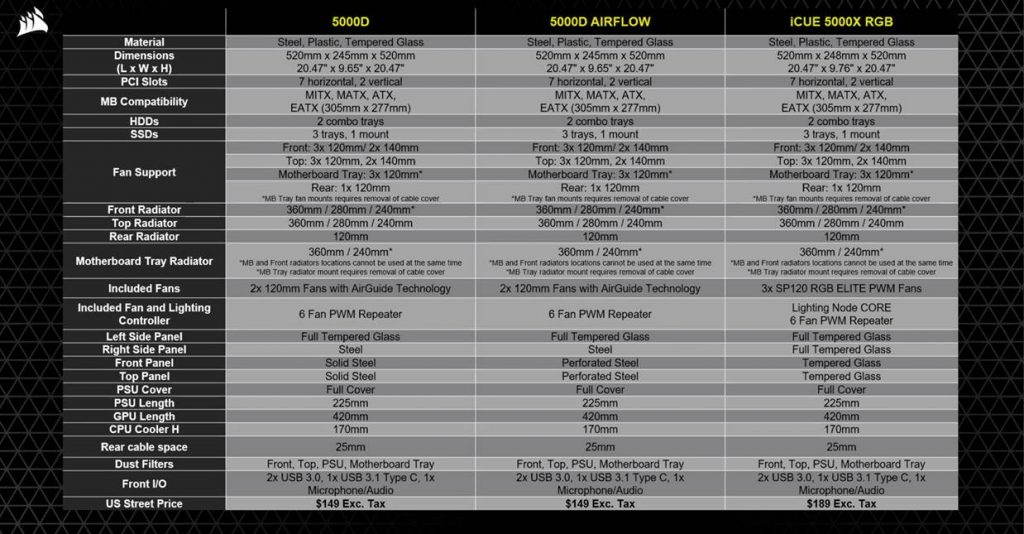
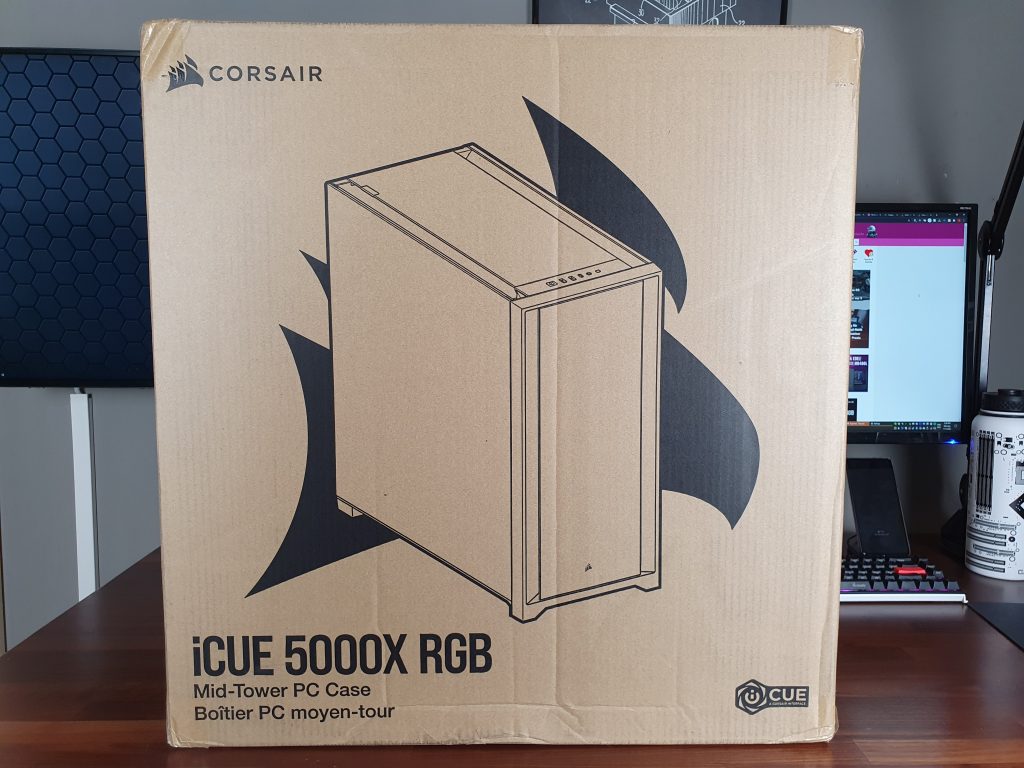
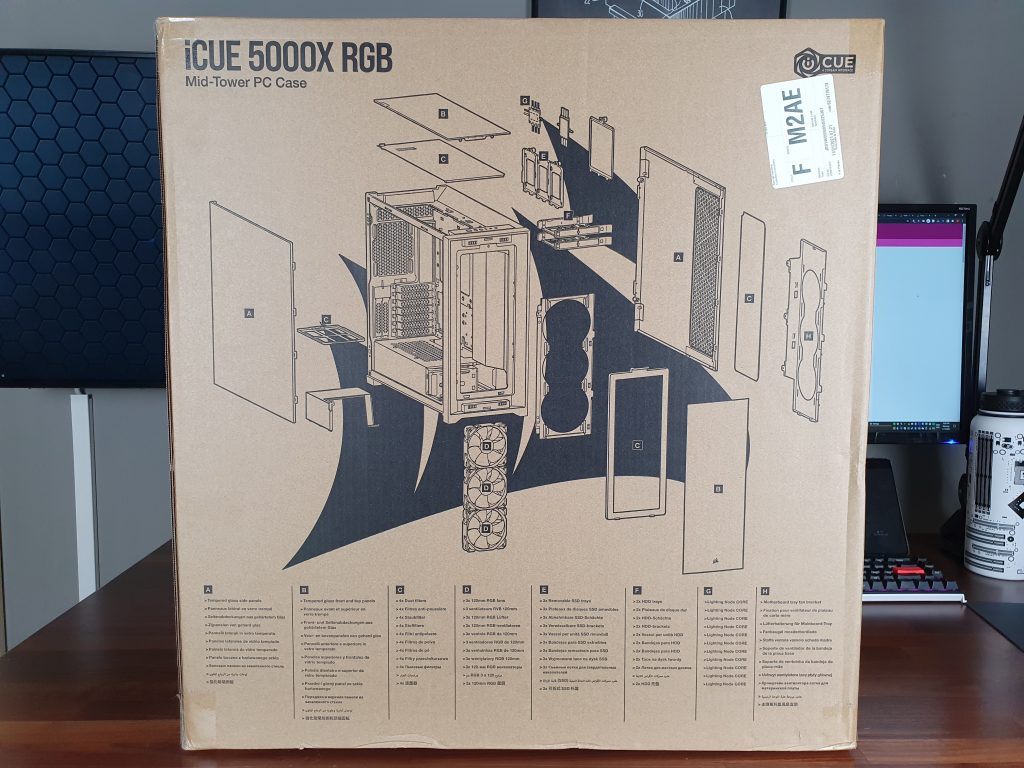
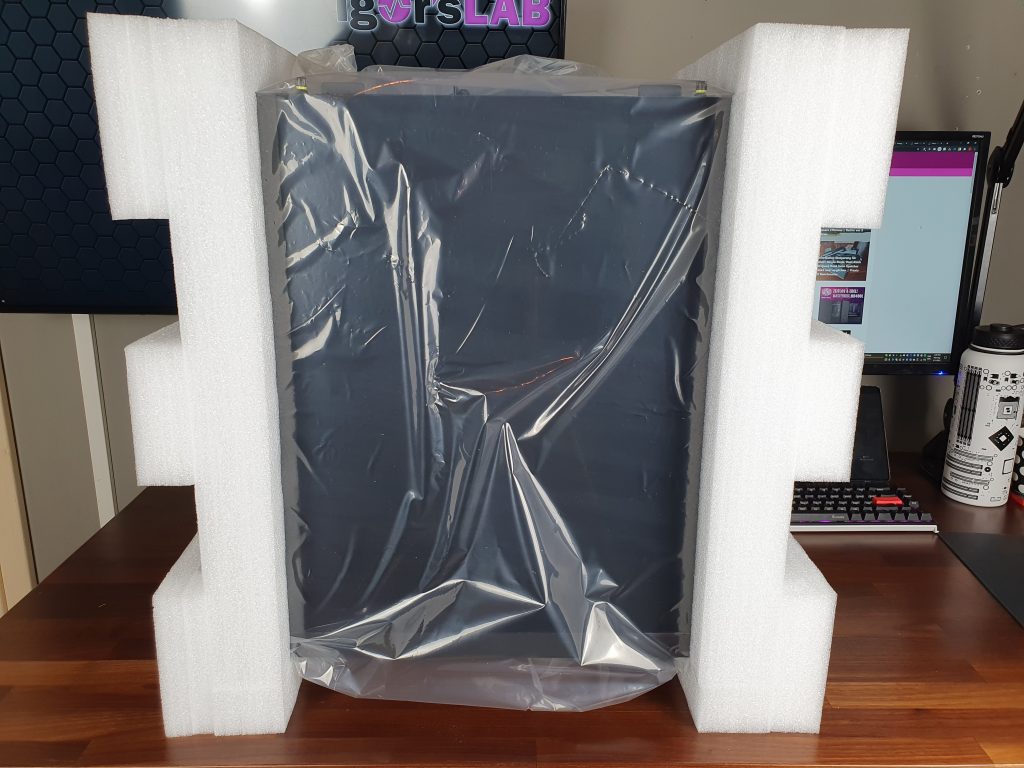
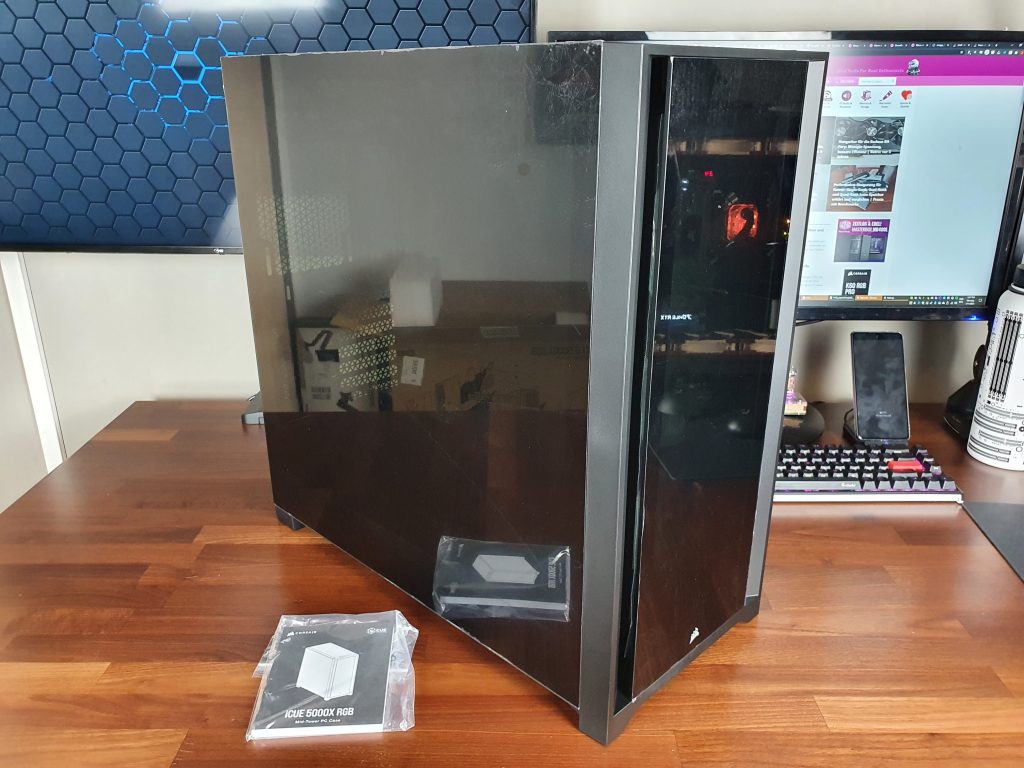
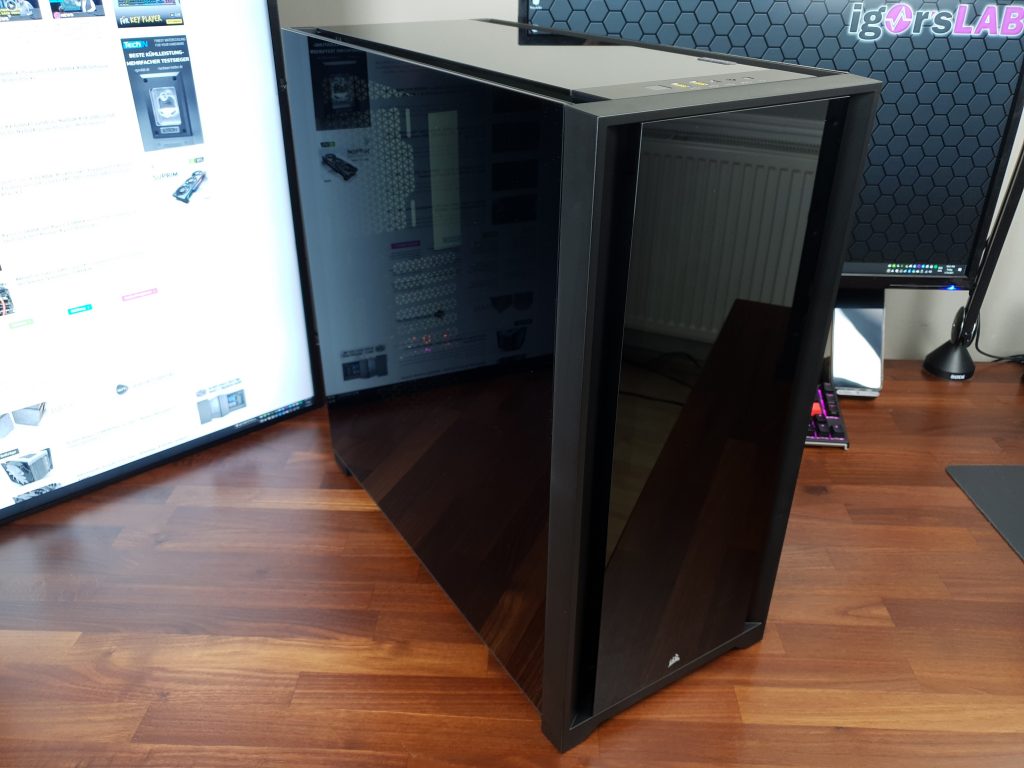
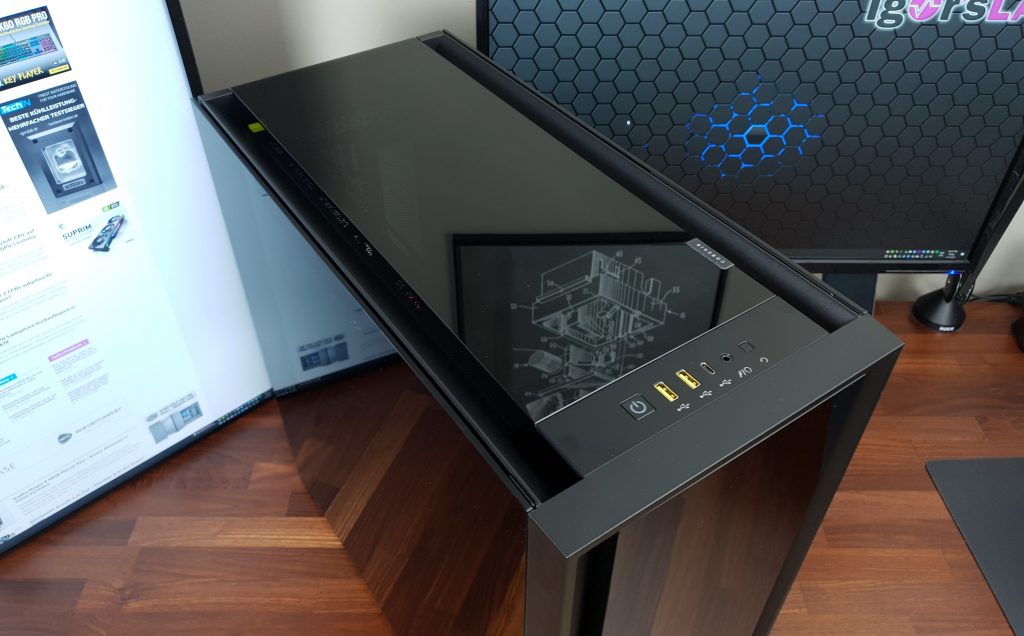
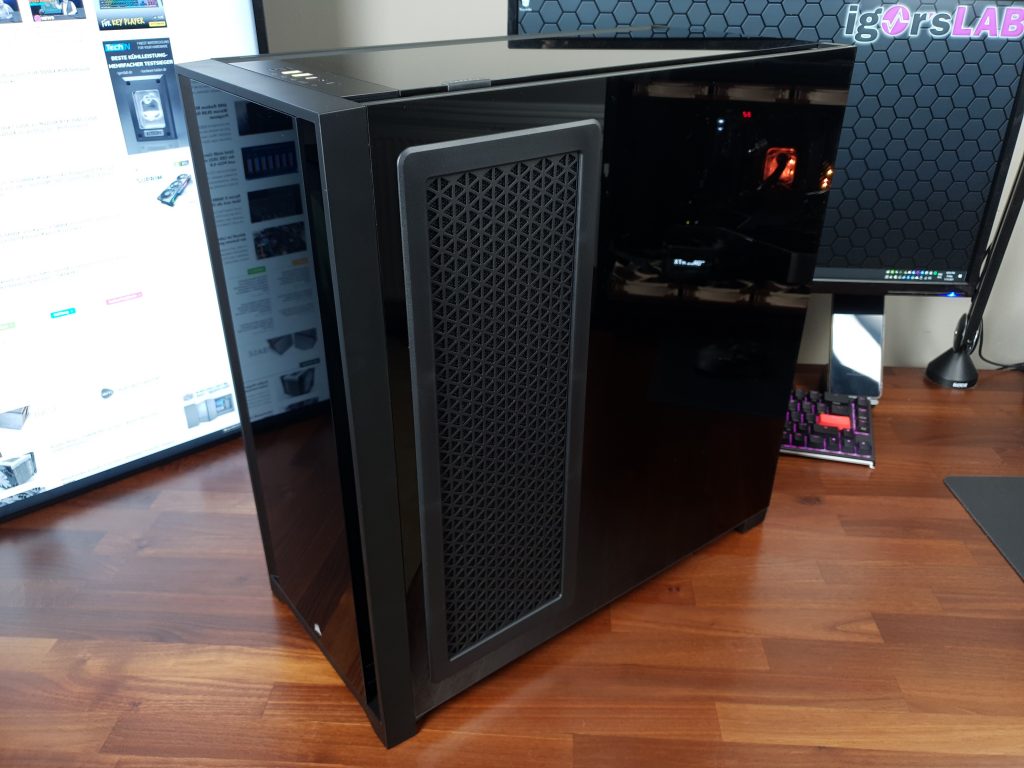
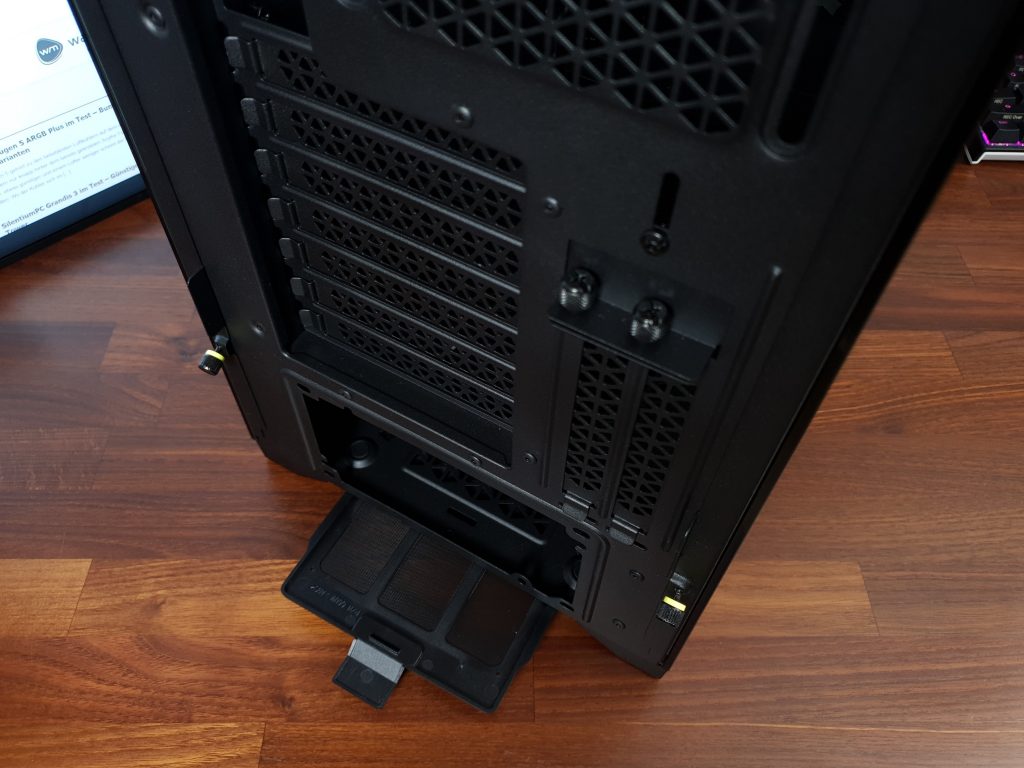


















Kommentieren